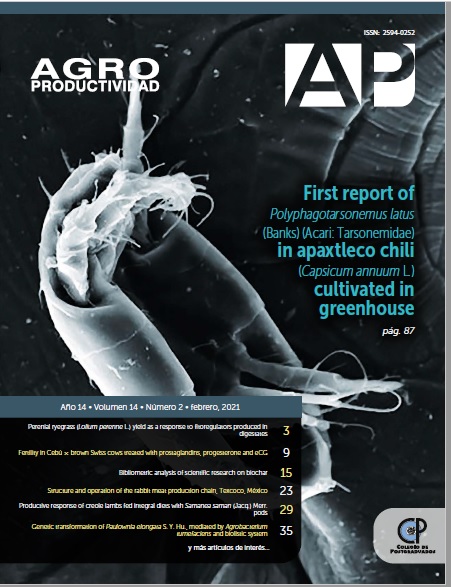Structure and operation of the rabbit meat production chain, Texcoco, México
##plugins.themes.bootstrap3.article.main##
Keywords
globalization, rabbit farming, value chain, product system.
Resumen
Objective: The objective was to describe and to analyze the situation and interrelations
among the of the rabbit meat production chain, in order to identify the main factors that
determine competitiveness.
Design / Methodology / Approach: The methodology used in the research was mixed
(qualitative and quantitative). The type of sampling we used was “Snowball”. A survey
was applied to 33 rabbit producers and a statistical analysis of the data was performed
in SPSS (Statistical Package for the Social Sciences). Later, with the use of Geographic
Information Systems, the farms were geo-located with Arcview® version 3.2.
Results: The results show the various stakeholders integrating the chain; the lack of
communication among them, but highlight commercial relationship among producers,
suppliers of equipment, feed and breeding stock; placing the producer as the weakest
point in the chain, only as raw material supplier. Producers are heterogeneous and have
mainly two types of farms; backyard farming and semi-technical. The spatial distribution
map of 33 producers was obtained.
Limitations of the study / Implications: Although rabbit farming is an important
complementary activity to food production, the study showed that in the area there are
no links among the various agents that integrate the production chain. There is only the
mere commercial relationship.
Findings / Conclusions: It is concluded that the null organization of producers keeps
them excluded from the productive value chain.

